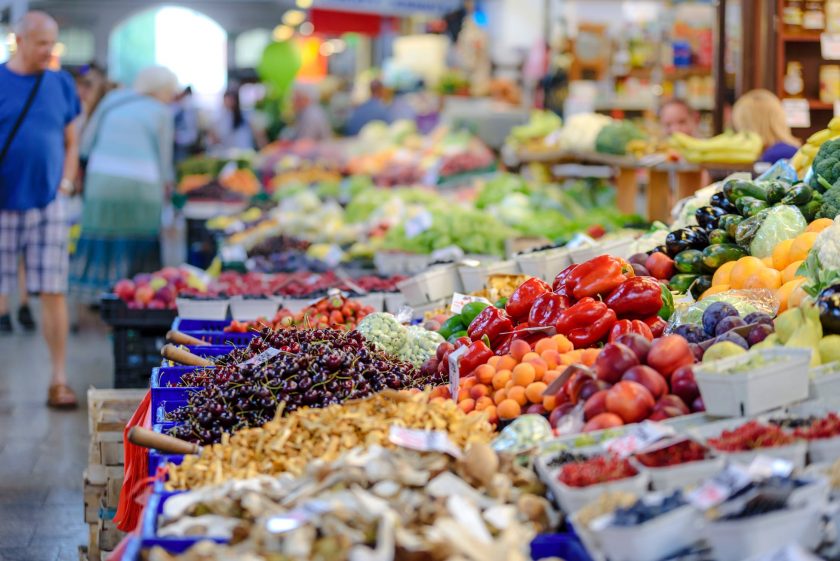Written by: Jürgen Fischer
Imagine going to the supermarket and for every three bags of grocery purchased, one of it is discarded into the bin.
Imagine you stop by the supermarket after a long day at work and buy three big bags of groceries for dinner. Then, on the way back to your car, you find the nearest trash can in the parking lot and throw away half a bag of groceries. Upon arriving home, you instantly toss the other half of the bag into the trash can in your kitchen.
At this moment, you are probably thinking to yourself: “I would never do that.” However, that scenario accurately reflects how our current food system works. Nearly one-third of food produced in the world becomes wastage, a term that encompasses both food loss and waste. The difference between food loss and food waste is pretty simple. For example, if harvested apples fall from a truck or rot during transportation, it’s considered food loss. However, if food intended for human consumption goes bad or unused, such as apples that spoil at the supermarket or are thrown out by a customer because they bought too many, it is called food waste. I find it both socially and ethically unacceptable that 30% of all food becomes wastage in a world where one in nine people are undernourished.
Take India as an example. While it’s the world’s second largest producer of food, it’s also home to a quarter of all undernourished people in the world. Inefficiencies and lack of refrigeration in the food supply chain currently cause food loss of up to 40%, resulting in many hungry people. The Food and Agriculture Organization of the United Nations (FAO) recognizes and combats this paradox with World Food Day, an annual awareness initiative aimed at reducing food wastage, combating hunger and poverty, and protecting the climate.
Efficient cold chains can reduce food loss by up to 40%
It’s not just India: a large share of the world’s food loss stems from inefficient supply chains. A great proportion of the food consumed today is perishable, including fruits, meat, and dairy. The UK’s Birmingham Energy Institute estimates that as much as 90% of the food wastage in developing countries stems from food loss somewhere along the supply chain. Packing, storing, and transporting perishables at the right temperature extends their lifetime, reduces food loss by, according to our own estimates, up to 40% in developing countries and ensures that more food reaches the tables of today’s growing population.
Limiting food losses will have far-reaching societal benefits
Every year, $940 billion is lost and 4.4 billion tons of greenhouse gases are emitted in the production of food that will never be eaten. Think about a liter of milk that perishes on the shelf in the supermarket. Not only does this milk not bring in any money for the supermarket owner, it even generates financial losses in regards to storage and transportation costs. Further up the supply chain, there was also the cow needed for producing the milk, the feed needed for the cow, and the land area occupied to produce this feed, as well as many other factors in its production. If we make more efficient use of the food we already produce, it will be possible to distribute fresh produce to a larger number of people without placing an additional burden on the environment. Cold-chain improvements in developing countries can also significantly increase the income of smallholder farmers there, as more of their produce will reach the end consumer.
Digital and efficient cold chains reduce food loss
It’s a mistaken assumption that food loss primarily occurs in developing countries while food waste is predominant in the developed world. In fact, despite having modern cold-storage facilities, refrigerated pack houses, and access to refrigerated transportation, Europe still suffers a food wastage rate of 40%. The primary reason for these losses is the lack of monitoring and traceability systems, which connect all the different elements of a cold chain together. As the various parts of the cold chain are often operated by different individuals or companies, it’s difficult to guarantee that products have been stored at the correct temperature along each step of the cold chain.
Tracking the real-time temperature of products through a cloud-based traceability system ensures that products remain at the correct temperature and humidity, maximizing food safety and security. If the temperature ever falls below the acceptable levels, alerts are triggered to all monitoring parties and the responsible stakeholder can act swiftly to resolve the situation. These levels of transparency and security offer great benefits to each person involved in the process, from farmer to distributor to shipper to grocer. Each one can be confident that the product has been handled appropriately. In the past, temperature monitoring has been an overlooked part of an efficient cold chain, but new innovations in tracking technology make it the solution that could ensure the greatest efficiency and reduce food loss even further.
Keep all three bags of groceries
I encourage you to think about your own buying and consuming habits the next time you go to the supermarket, and keep in mind how much food has already been lost on its way there. We here at Danfoss will continue to produce innovations that will result in a more efficient cold chain. Working together, we can all contribute to reducing food wastage, enhancing food quality and safety, and making efficient use of our planet’s resources.
Originally published at www.weforum.org.






